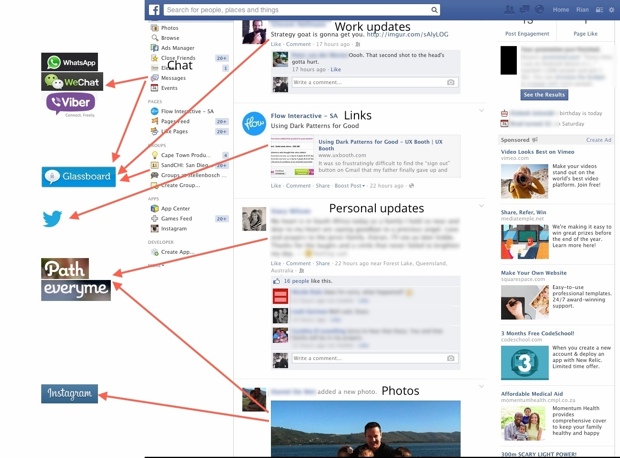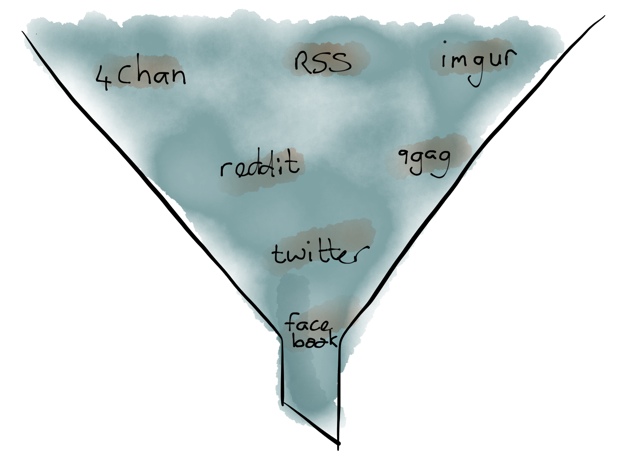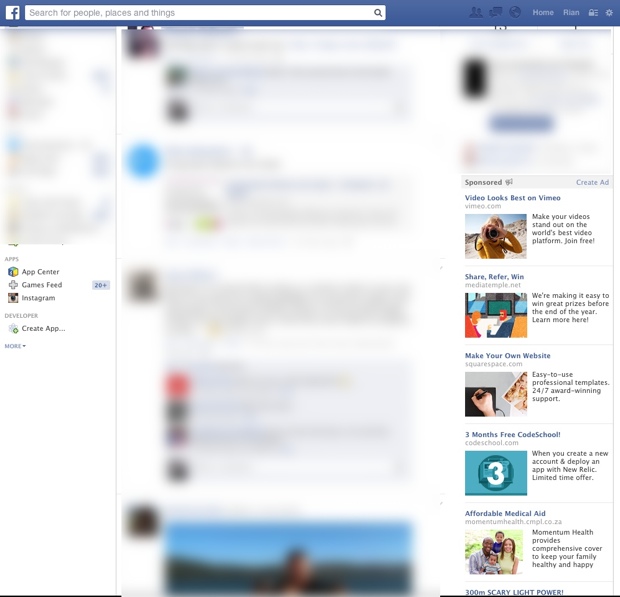John Gruber in Thoughts and Observations Regarding This Week’s Apple Event Introducing the iPad Air and Retina iPad Mini:
This puts Microsoft in a tight spot. Apple gives away software for free in exchange for your buying their hardware. This is not charity. It’s also in marked contrast to Google, who gives away software for free in exchange for selling your attention (and personal information) to advertisers. Apple and Google are squeezing Microsoft from both sides, and the result is that less and less perceived value in the industry resides solely in software. You can make money selling hardware (like Apple) or make money selling ads (like Google), but given the popularity of Apple’s hardware and Google’s apps and services, it’s getting harder for Microsoft to make money by selling software.
John Moltz in Rudderless Microsoft:
I don’t think Microsoft is going anywhere. I mean that in two ways: 1) I mean they’re not going away and 2) right now they’re not going where the puck is going. They’re sailing somewhat aimlessly though increasingly margin-less waters. And the degree to which Microsoft’s investors, boosters and followers are OK with that is rather baffling.
It’s hard to write about Microsoft. If you think they’re doing great things you get ridicule from the Apple side. If you think they’re headed for disaster you’re labeled as a brainwashed fanboy. As with most things, the truth is more likely somewhere in the middle. But even the most die-hard Microsoft fan has to admit that Microsoft has been painted into a corner:
- By making OS X 10.9 and its core apps free, Apple is creating an expectation that all operating systems should be free. It doesn’t matter that fewer computers run OS X — it’s about the precedent and how that affects consumer expectations.
- By making services like Gmail and Docs “free”1, and by continuing to reduce the feature set gaps between those services and Microsoft Office, Google is forcing users to ask tough questions about the software they’re using, and why they’re paying so much for it. When authors like Charles Stross start taking on industry conventions by writing Why Microsoft Word must Die, you need to realise that your product is walking very close to the edge of a tipping point.
And yet, Microsoft appears to be doubling down on what are their two biggest strategic mistakes.
First, they’re not owning the whole hardware/software supply chain. Reading Gartner’s advice to Apple in 2006 is almost funny now in how wrong it ended up being:
Increasing component costs and pressure to cut its prices mean Apple’s best bet for long-term success is to quit the hardware business and license the Mac to Dell, analyst firm Gartner claimed on Tuesday.
The point is simple: if Microsoft can’t make money on PC hardware (which they can’t), they need to make money on the software. But that gets very hard when the “free” options become more and more appealing. Yes, most organizations still rely on Exchange for their mail and calendars. But how long can that last when employees all switch to Gmail and can’t shut up about how horrible Outlook is? RIM thought they had the enterprise market locked up because they controlled IT managers. How did that work out for them once employees starting rushing the IT castle, demanding support for their iPhones?
Second, Microsoft is sticking with their “You don’t have to compromise!” philosophy. Does Surface run a a desktop OS, or a tablet OS? Neither, and both! And that is a huge problem. By not making “compromises” they’re actually compromising way too much. Perhaps Doug Bowman summed it up best:
Trying to use a desktop OS on a tablet isn’t “no compromise”, it’s utter frustration, and it doesn’t look like Microsoft is planning to stop doing that any time soon. From Engadget’s Microsoft Surface Pro 2 review:
As a tablet, the Surface Pro has made fewer strides. And that’s a shame, since the Pro is, at its heart, a tablet. […] The new Pro is much improved, but it’s still at its best in notebook mode. Indeed, whoever buys this needs to want a tablet and laptop in more or less equal measure. Because if what you really want is a laptop you can occasionally use as a tablet, you’re still better off with a convertible Ultrabook.
This inability to compromise has always been a problem for Microsoft. Back in 2006 Microsoft gave us a look at the most-used features in Word 2003, and it includes this paragrah:
Beyond the top 10 commands or so, however, the curve flattens out considerably. The percentage difference in usage between the #100 command (“Accept Change”) and the #400 command (“Reset Picture”) is about the same in difference between #1 and #11 (“Change Font Size”) This is what makes creating the new UI challenging — people really do use a lot of the breadth of Office and beyond the top 10 commands there are a lot of different ways of using the product.
Apple would look at that data and say, “let’s cut the bottom 200 commands.” Microsoft looked at it and said, “We’re going to need a bigger ribbon.”2
In short, what Microsoft needs most now is a leader who knows how to make the right compromises. It needs someone who can figure out how to bring the success of the Xbox integrated business (oh look, they make the hardware and the software for that!) to the rest of the company.
Update: As the honorable Mr. Maughan points out, this relates nicely to his post Compromise and glorified ignorance.


